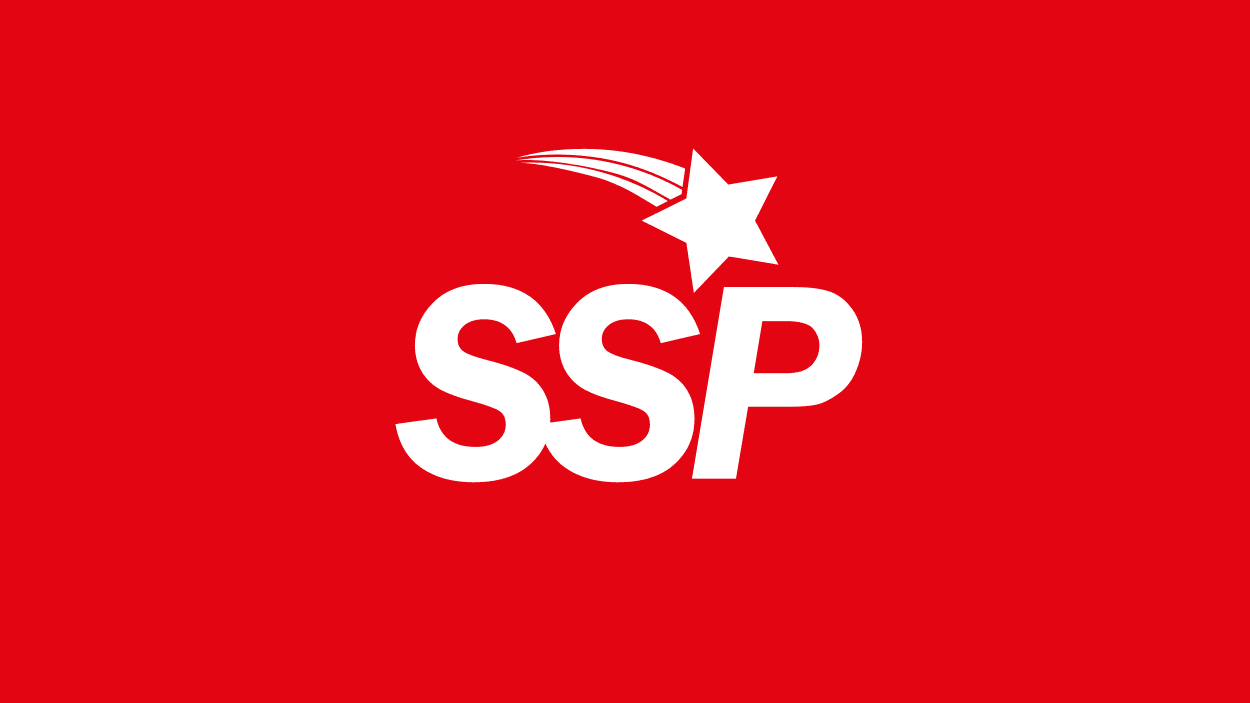
SSP National Secretary, Hugh Cullen, addresses the concerns of the Scottish Socialist Party’s membership in an open letter to SNP Health Secretary Jeane Freeman. This comes after recent news of further delay to the opening of the Edinburgh Sick Kids Hospital, and stories of the SNP’s sketchy involvement with the private firm responsible.
6th October 2019
Dear Jeane,
I am writing to you on behalf of the Scottish Socialist Party, to convey our profound concerns over the Scottish Government’s handling of the project to build a new Sick Kids Hospital in Edinburgh.
The NPD method, used to build the hospital under the ‘Scottish Futures Trust’ and now discredited by the EU, betrays the trust of Scots who elected you on a promise to use devolved powers to protect the NHS in Scotland from the ruthless privatisation that takes place in England and Wales.
This scheme is starkly similar to Labour’s deeply discredited PFI projects and guarantees investor’s profits from the public purse. It is a tremendous waste of money to spend decades hiring hospitals and schools from firms instead of building and owning them ourselves. As the Scottish Socialist Party has consistently highlighted and opposed those disastrous PFI schemes, we have been outraged but not surprised by the frequent delays, spiralling costs and reports of dangerous cost-cutting in construction repeated here.
To right this wrong, we ask that you legislate to terminate the contract with IHSL (the private consortium with the contract to build and own the hospital) and take the new hospital—and all other healthcare assets—into public ownership.
We note the recent revelation that the PR company hired by IHSL is Charlotte St Partners. This firm was founded by the SNP’s Andrew Wilson, author of the Sustainable Growth Commission—the SNP’s agreed blueprint and economic strategy for independence. We have grave concerns about the SNP’s relationship with firms securing public contracts and do not feel this approach is in the interests of Scotland’s working class majority.
The deeply harmful economic ideas peddled by the likes of Andrew Wilson are thoroughly Thatcherite. That ideology is surely a cause of the inequality created by Westminster and therefore a basis of our shared desire for Scotland to have the full economic powers that come with reclaiming sovereignty. Neoliberalism has no place in a fair Scotland and we will not persuade a majority of the case for independence if they can expect more of the same austerity and private profiteering from public services.
Regards,
Hugh Cullen
National Secretary
Scottish Socialist Party

One thought on “An Open Letter to the SNP Health Secretary”
Hugh, just by way of information there is a further drawback to PFI/ NPD projects that the general public might not be aware of.
In the past the client body commissioned a design team led by an architect commonly referred to nowadays as the project manager. The team included a quantity surveyor and engineers, structural, services and environmental, and landscape architects. The architect in the lead role was represented on site by a Clerk of Works. The architect was directly responsible to the client body who paid all fees.
After the scheme design was approved by the client, detailed project costs were provided by the quantity surveyor from drawings and schedules provided by the architect which incorporated information from the other members of the design team. The QS included a contingency of 5% on the estimated cost in his Bills of Quantities which was to cover minor additions/adjustments, and had to be approved by an Architects Instruction. This ensured there was little cost over-run. A contract period was also included.
Traditionally the detailed drawings and Bills of Quantities would be out out to tender. Although a drawn-out process it worked in the client’s interest and, in the case of public works, in the public interest.
During this process permissions were required: planning permission, and a Building Warrant to ensure that the building complied with the statutory Building Standards Regulations.
Work on site was checked by both the Clerk of Works for quality and Building Control for compliance. At the end of the contract period ‘snaggings’ were carried out to correct minor defects and the building signed off and handed over.
To avoid competitive tendering some contractors offered a Design and Build contract to reduce costs, and although these were largely successful in both reducing costs and construction time they led to a reduction in oversight and responsibility since the architect was being paid by the contractor rather than the client, and there was no everyday site supervision. It was also in the contractor’s interests to finish the project asap and there was always a temptation to cut corners.
From these D&B projects its easy to see why clients on much larger projects would be tempted to save capital costs in favour of revenue, hence the introduction of PFI schemes, to which have been added the revenue costs of maintaining and running the finished building. When you throw in more complicated contractual arrangements, the vagueness of the ultimate funding source and their liability, with the simple fact that the client doesn’t have the expertise to negotiate and manage the contract on its behalf, you have a recipe for lawful robbery.
The problems with ventilation and drains on the Sick Kids Hospital project highlight the potential for disaster of PFI contracts. It is impossible to imagine how these could have happened under a more traditional system. Drains and ventilation as designed and billed would be inspected on-site by the Clerk of Works and the services engineer, and tested and approved by Building Control to ensure compliance. I have never heard of this happening on any traditionally managed project.
Sorry to be so pedantic but, in additional to the folly of building public facilities with private capital that ensures that the public ultimately pay for several times over, but don’t own, there is no guarantee that they are built properly in the first place. And with a nice complicated financial structure that ultimately ends up in some offshore island there will be no refunds.
Comments are closed.